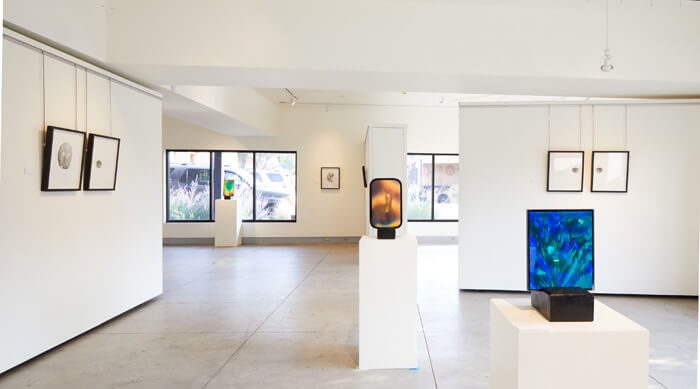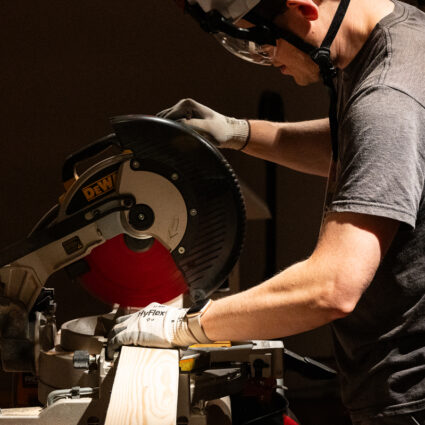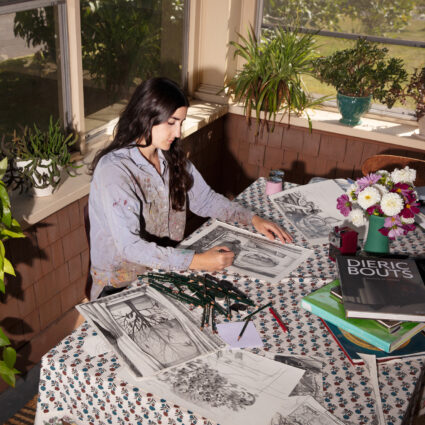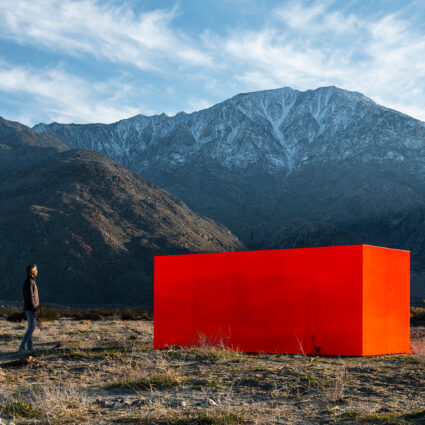Thais Mather: Western Blue at Santa Fe’s form & concept ponders the comprehensive characteristics of the color blue in a cunning display of sculptural installations, micro-pointillist drawings, watercolors, and holograms.
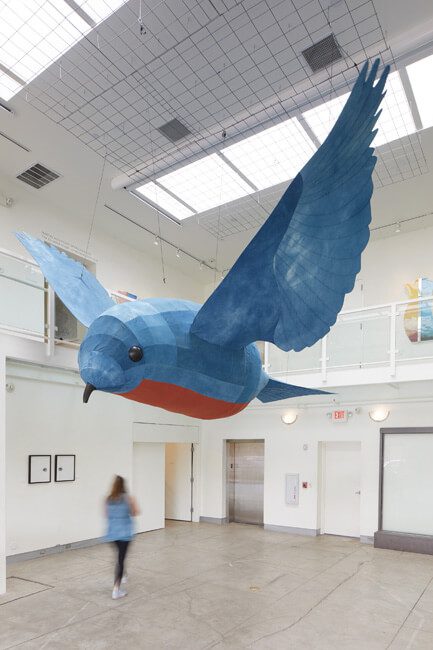
Thais Mather: Western Blue
August 11–October 15, 2021
form & concept, Santa Fe
Even if blue isn’t your favorite color, there’s a decent chance that you’ve been in an intimate relationship with the shade. That’s because we’ve been forced to embrace the hue’s forlorn connotations over the past year and a half. But blue also represents jovial qualities of human existence, ranging from calm and serenity to imagination and sincerity.
Thais Mather’s current exhibition at form & concept in Santa Fe considers the wide-ranging psychological qualities of the primary color blue across disparate bodies of work, including installation work, drawings, holograms, and watercolors. The exhibition’s throughline of the color blue—approached from different angles, moods, shades of light and dark, and wide-ranging media—isn’t necessarily evident until after multiple views and time spent with the artist statement by the Santa Fe-based Mather, who owns and operates Good Folk gallery with her husband Todd Ryan White.
Western Blue opens skyward with an oversized bird sculpture—inspired by high-desert western bluebirds that live in the artist’s garden—that Mather, White, and Amy Westphal fashioned from indigo-dyed cloth panels, metal, glass, and LED lights. The scale and vibrant colors of the open-winged bird, elevated in the atrium space and beaming in the surplus sunlight, bring extra marvel to the installation.
From there, the scale of Mather’s ensuing artworks couldn’t be more night and day. A series of micro-pointillist drawings of abstracted facial parts and forms, some reminiscent of ancient Egyptian masks, were executed with a brush the size of a human eyelash. According to form & concept, the larger renderings, drawn during last year’s pandemic lockdown, took a month to complete—overall, the show feels like an existential meditation on sadness, hope, and the self.
Several works in Mather’s Beatific Vision micro-pointillist series portray ear-shaped eye figures—one piece looks like a seashell-type asteroid that threatens to float away and out of the side of the paper. Eternal Time (1) features an unsettling half-face that could be read as a baby death mask while The Shades of Living Life (1) evokes a hockey goalie mask from the 1970s.
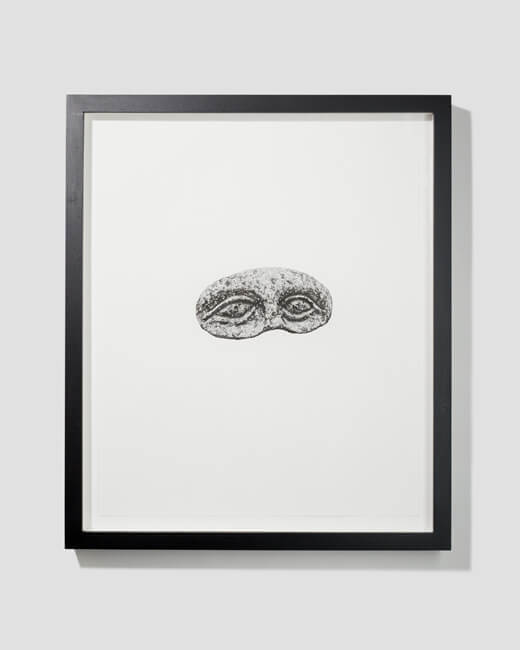
Stepping closer to a number of these drawings, the finite and assiduous details recall a lunar surface with mind-blowing detail. Though the pieces are black and white, there’s blue-like brooding and mystery.
Mather’s large-scale blue watercolors, which are some of the most eye-catching works in this exhibition, as well as a number of holograms, are sprinkled throughout. Eyes stare back at the viewer in Dark Adaptation, but the intricacies of this and other holograms are lost in the mid-afternoon New Mexico sun that beautifies the gallery but overwhelms these works with reflections.
A darkened center room showcases Into the Black, an involved installation of candles cast from Mather’s hands and arms. The white beeswax and soy wax candles, arranged in various ritualistic orientations on low tables and taller stands, include cupped hands and open arms that appear ready to receive an offering. Many temperatures and dispositions of the color blue—curiosity, despair, and sentimentality—are unified in this foreboding and emotional installation.
Back in the bright sunlight of the gallery, in a corner room that looks out to Guadalupe Street, is Practitioner, a mixed-media installation featuring multiple watercolors of the Turkish evil eye and the room-anchoring Sunlike Star hologram. There are also tiny nazar charms on the windowsill that look up and towards The Solacii, an outdoor sculpture that was recently destroyed in a suspected arson.
The interaction between the charred work and the evil-eye pieces is almost too much to bear—as though the evil eyes couldn’t protect the sculpture from irreparable harm—and marks another “feeling blue” chapter in the relentless darkness of 2020 and 2021. In a truly bleak scene, the bottom of the public art piece is torched but the heads and faces and hands towards the top remain intact.
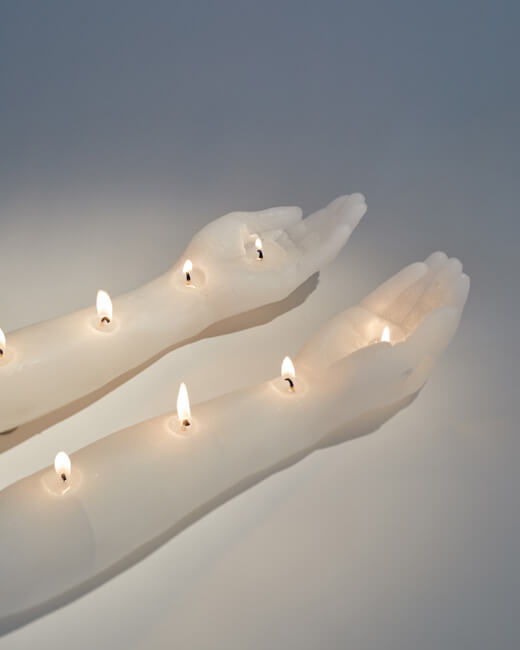
The well-rounded accomplishment of Western Blue—a compelling showcase of Mather’s talented command of media, such as watercolor, that are often rebuffed by the art world but leave an impression in this case—reminds us that there’s no singular defining emotion attached to a color, artwork, or pandemic year(s). Mather’s pensive and tranquilizing exhibition, despite its esoteric and oblique constitutions, illustrates that “feeling blue” isn’t necessarily about being down or emo. It’s about all of the moods, including solace, which we can all use more of today.
Thais Mather: Western Blue is scheduled to remain on display through October 15, 2021, at form & concept, 435 South Guadalupe Street.
